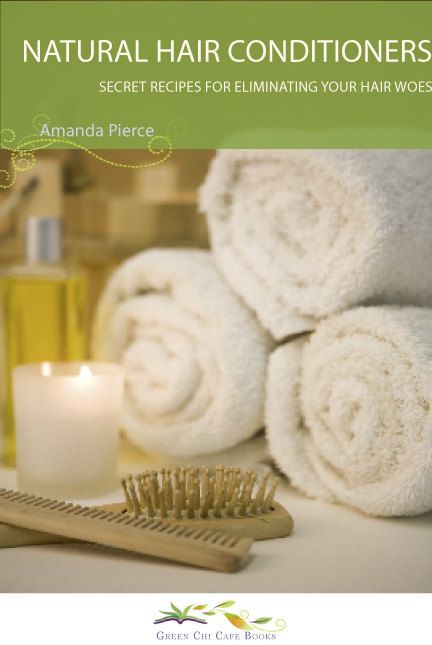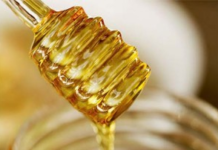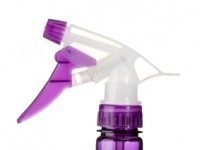

Almost all conditioners today—inexpensive, expensive, rinse-out, or leave-in—have some form of silicone in them. (Ingredients like dimethicone and cyclomethicone ending in “cone”.) These polymer compounds act as sealants, covering the hair with a shiny coating that keeps humidity and moisture out.
The challenge is that over time, the hair can lose its natural moisture, and become dry and lifeless, and more vulnerable to breakage and split ends. These silicones also tend to build up on hair, and since they don’t dissolve with oil or gentle cleansers, it takes a harsh, or “clarifying” shampoo containing detergents like sodium lauryl sulfate, to remove them.
Do you recognize the “addictive” cycle some of us find ourselves in? Do you see the pattern of discovering a new, smoother-than-smooth salon conditioner, using it until the build-up leaves our hair heavy, dry and brittle, and then, once the build-up is removed with a stripping shampoo, starting the cycle again?
There is a better way to go about hair care. Your hair does not have to be coated with a chemical polymer to be shiny. It does not need to be stripped of its natural moisture and oils with a harsh shampoo just to remove product build-up. My once brittle, over-processed, and often frizzy hair is now in beautiful condition—shiny soft curls, full of life and bounce. As I gathered these recipes and formulas, I also gathered stories from other people who broke the chemical “habit.” I’ll share those with you, too.
Most people agree that it takes a couple of weeks for your hair to show real signs of its “natural recovery.” These recipes, full of herbs and natural proteins and oils, can be added to your regular hair care routine—as occasional deep conditioning “spa treatments”—or they can be the start of a whole new, exclusively natural DIY conditioning regime.
At first you may miss the foamy suds or slippery feel of commercial brands. My neighbor Ella, who has long blond hair, mentioned missing the bold “kiwi” aroma of her regular brand of conditioner. The synthetic “parfums” added to commercial brands are another part of the chemical equation designed to improve your “experience” conditioning your hair (a full head of aromatic suds), but those chemical additions do not contribute in any way to your hair’s condition. In fact, some would argue that they work at the expense of your hair’s health and condition. Ella is now a big fan of adding a few drops of her favorite essential oils to her DIY formula of choice.
Once you begin to see and feel a dramatic difference in your hair, I think you’ll be inspired to continue, and to experiment more, finding just the right natural formulas for your hair. Here are a few “normal” conditioners to get you started.
Normal Conditioners
As you try these, and experiment with new formulas, you’ll find what works best for you.
You can try different ingredients, formulas, and different ways to use these conditioners.
For example, some people apply their conditioners directly to dry hair, and let them soak in, then hop into the shower to rinse. Some days you can take your time, treating yourself to a spa treatment that you apply after lightly shampooing and towel drying. You might read, or apply a luxurious face masque as you wait for the conditioner to do its magic. Other days you may mix one of these up, apply to warm wet hair, and then rinse and be on your way. I’ve talked to many women (and a couple of men) who apply one of these conditioner formulas right before bed, wrap their hair in a light towel or cap, and let their hair condition all night as they sleep. A light shampoo in the morning and off they go, ready to accept compliments throughout the day.
Yogurt and Honey
You can substitute yogurt for mayonnaise in any of the deep conditioning treatments above for a less intensely-conditioning alternative. This one combines yogurt with honey, for added shine.
½ cup yogurt
1T honey
Mix well. Apply to hair that is shampooed and towel-dried. Leave on for 20 minutes. Rinse well.
Honey
Try mixing equal parts honey and water until you have a nice, thin, pourable conditioner. Rinse twice; you won’t believe how soft and shiny your hair will be.
Aloe Vera Conditioner
Aloe Vera has been used for centuries as a skin and hair conditioner. This is a conditioner adapted from Mary Beth Janssen’s excellent Naturally Healthy Hair.
Moisturizing and cleansing, it is a good conditioner for all hair types.
1/3 cup aloe vera gel
Juice of ½ lemon (or 1 Tablespoon)
4-6 drops essential oil(s) of your choice
Mix well; add to shampooed hair, leave on for 5 minutes, rinse.
Yogurt and Lemon
My friend’s hair stylist told her about this one! “She usually tries to sell me one of their salon products,” she told me, “but the last time she cut my hair she confessed that this was what she used on her own hair.” No wonder…this is a wonderful blend…I add a couple drops of essential oils—whatever appeals to me at the time—to this.
½ cup yogurt
1 egg yolk
1 Tablespoon or a couple generous squeezes fresh lemon juice
2 T sesame oil
Mix well, stirring until all of the ingredients are well blended. Leave on for 15-20 minutes; shampoo lightly or double rinse well, with first warm and then cool water.
–Adapted from Natural Hair Conditioners by Amanda Pierce.



